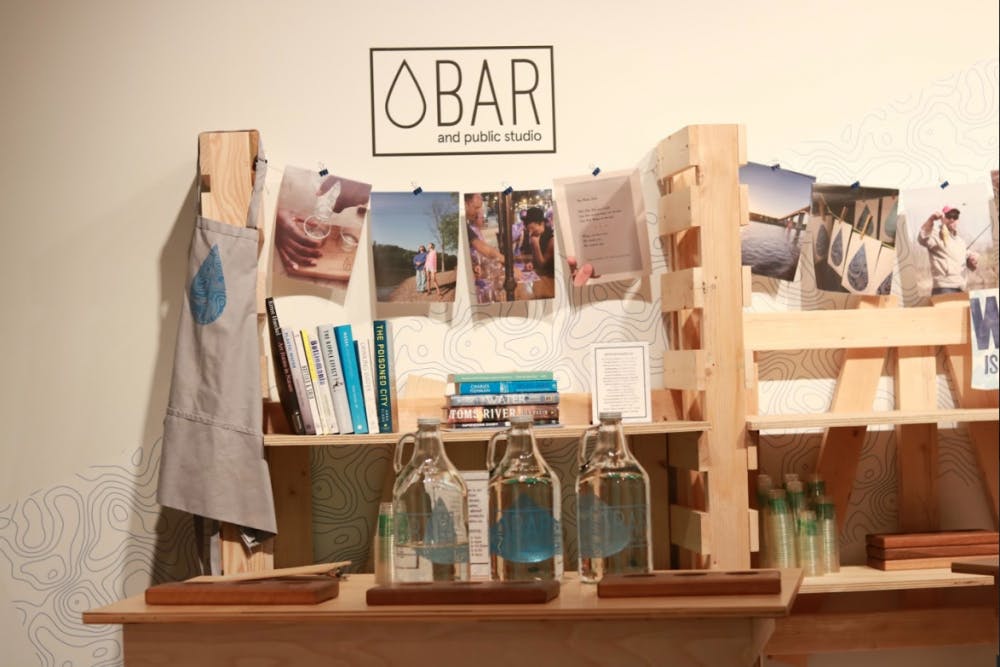By Alexandra Bonano
Correspondent

Water, especially the water we drink, never seems to get much of a second thought, but the College has set out to change that. The second installment of the TCNJ Art Gallery’s exhibition, “Springs Eternal: Art, Water, Change,” which was held on Feb. 13 in the Art and Interactive Media Building, included the Water Bar exhibition.
The founders of the Water Bar, visiting artists Colin Kloecker and Shanai Matteson, made an appearance at the opening day panel of the exhibit on Feb. 6. Kloecker and Matteson’s main objective when opening the Water Bar was to bring communities together to learn more about water in an artistic space.
The “Springs Eternal: Art, Water, Change” exhibition will be open until March 31 and will continue to hold many events, including another Water Bar Service on March 13. The artwork will be on constant display and is free for the public to enjoy.
The TCNJ Art Gallery partnered with Water Bar’s creators to foster a space of education, free-flowing conversation and artistry.
Amanda Radosti, the environmental program specialist at the College, and Diane Bates, a sociology professor, served as the “water tenders” for the event. They engaged with participants and assisted them throughout their Water Bar experiences. The exhibit encouraged attendees to contemplate how water is integrated into their daily lives and the process behind its production.
“I had never really thought to taste water that was from one place and then from another,” said Kiernan Dempsey, a junior interactive multimedia and computer science double major. “So it was interesting to think about how each of the waters that I tasted was different because I never thought about it before.”
The display included large jugs of water from three different locations for the public to try and decipher, based on taste, which location each jug was brought from.
The three sources of the water were from the College, Philadelphia and Horsham, Pennsylvania. The water originating in Horsham is groundwater, or water held deep in the soil and rocks that is brought to the surface through the use of a deep well.
The three jugs were kept at the same temperature so that it could be ruled out as a factor for any detected change in taste. At the start of each water tasting, Radosti or Bates would ask each person what comes to their mind when they think about water. They received a range of answers that included everything from the ocean, to a shower or a cold glass of water on a hot day.
According Margaret Pezalla-Granlund, the director of the art gallery and the Sarnoff Collection, the Water Bar exhibit was doing its part in bringing the campus community closer together.
“I’ve known about the Water Bar and Social Space for a few years, and had been interested in how they’ve been able to build something that’s about having conversations and sharing stories,” she said. “Already at the TCNJ Gallery, faculty, staff and students have met up, and had conversations over little (compostable) plastic cups of water that they probably wouldn’t otherwise have had.”







